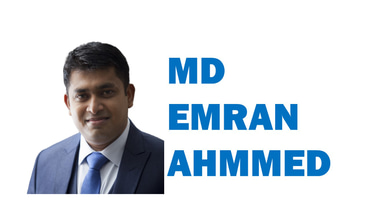Essential Vocabulary for IELTS Academic Writing Task 1: Simplified and Easy to Use
Master the most essential vocabulary for IELTS Writing Task 1. This list simplifies learning with categorized words for trends, comparisons, and proportions. Practice effectively and boost your confidence to describe graphs and charts with precision and clarity.
IELTS


Mastering vocabulary for IELTS Writing Task 1 is essential for describing graphs, charts, tables, and diagrams accurately. Here’s a clear and organized list of the most commonly used words, grouped by their purpose to help you learn and apply them quickly.
1. Words for Describing Trends
These words help you explain increases, decreases, or stable trends in the data:
For Increases: Rise, Increase, Grow, Surge, Climb, Soar
For Decreases: Fall, Drop, Decline, Decrease, Plummet, Reduce
For Stability: Remain constant, Stay the same, Plateau, Level off
For Fluctuations: Fluctuate, Vary
Examples:
“The number of students increased steadily between 2010 and 2020.”
“Sales fluctuated significantly over the five-year period.”
2. Words for Quantities and Proportions
These words help you describe how much or how many:
Big Numbers: Majority, Total, Millions, Billions
Small Numbers: Minority, Few, Quarter, Third, Half
Estimates: Approximately, Nearly, Around, Over, Under
Examples:
“The majority of respondents preferred online shopping.”
“Approximately 25% of people chose public transport.”
3. Words for Comparing Data
Use these words to compare different data points:
Bigger: Higher, Greater, More, Largest, Fastest
Smaller: Lower, Lesser, Less, Smallest, Slowest
Similar: Equal, Comparable, Same, Similar
Examples:
“The sales in 2020 were higher than in 2019.”
“Both categories showed similar growth trends.”
4. Words for Time References
These words help set the timeline for your descriptions:
Past: Previously, Before, Until, From, During
Present: Currently, At present
Future: By, Over, Throughout
Examples:
“From 2015 to 2020, the figures increased steadily.”
“Currently, the unemployment rate is stable.”
5. Words for Describing Data and Visuals
These words help you start your description and explain the type of information presented:
Types of Visuals: Chart, Graph, Table, Figure, Diagram
Actions: Show, Illustrate, Represent, Depict, Highlight
Descriptions: Data, Information, Trend, Comparison, Overview
Examples:
“The bar chart illustrates the population growth in urban areas.”
“The data shows a steady decline in rainfall over the decade.”
6. Adverbs and Adjectives for Adding Precision
Use these to describe changes more effectively:
For Significant Changes: Dramatic, Significant, Substantial, Considerable
For Minor Changes: Slight, Marginal, Small, Modest
Adverbs: Rapidly, Gradually, Steadily, Slightly, Noticeably
Examples:
“There was a significant increase in profits in 2021.”
“Profits rose slightly in the first quarter of the year.”
How to Memorize and Use These Words
Practice in Context: Write sentences using each word. For example, pick a graph and describe trends, comparisons, and proportions using these words.
Group Learning: Memorize words by categories (e.g., trends, comparisons) to make recall easier.
Create Templates: Use these words to build sentence templates, such as:
“The [chart type] shows [type of trend] between [timeframe].”
“[Data point A] was higher than [Data point B] by [percentage or amount].”
Review Regularly: Revisit this list often and apply it to mock IELTS Writing Task 1 questions.
By focusing on these essential words, you’ll find it easier to describe data accurately and clearly in IELTS Writing Task 1. Practice often, and you’ll be ready to tackle any question with confidence!
[Humble Request: If you found this blog helpful, please share it with others to spread knowledge and help them learn.]
Read more: Common Mistakes in IELTS Listening and How to Avoid Them
